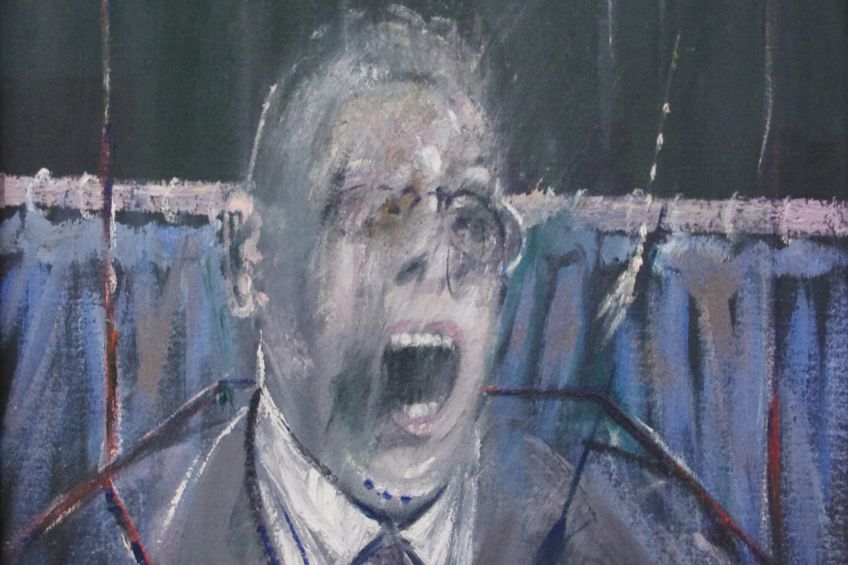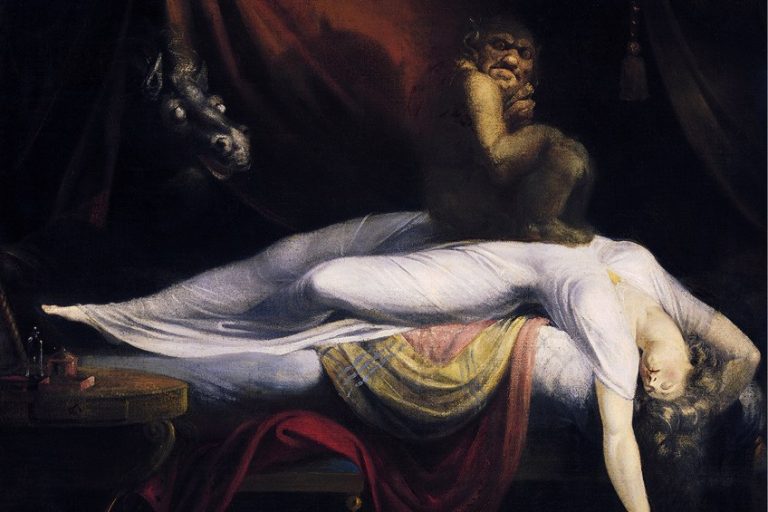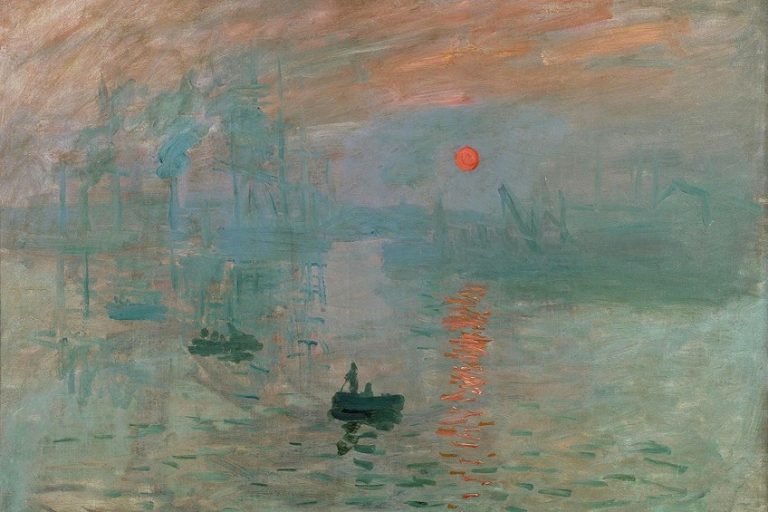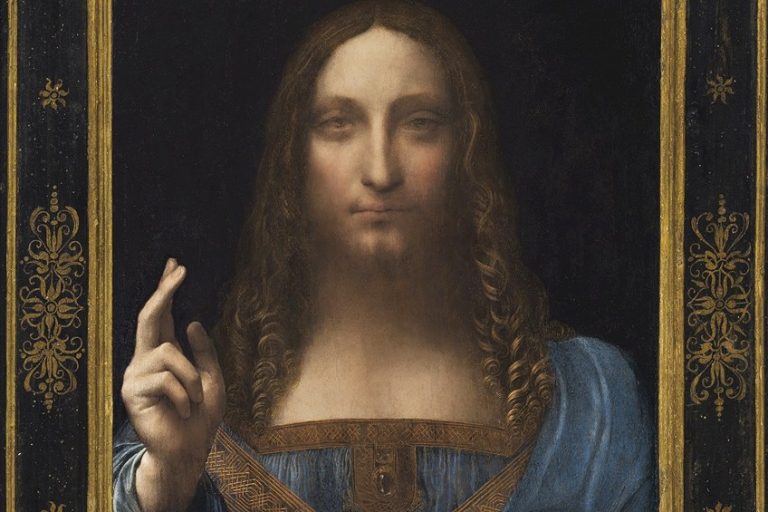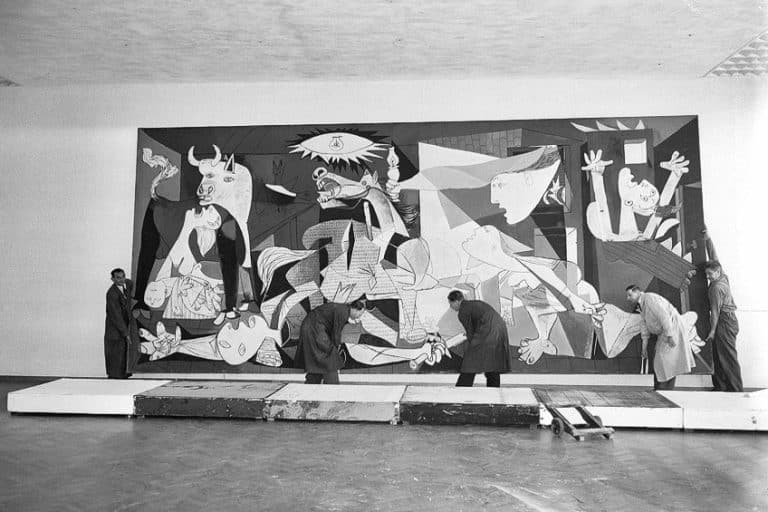“Study for a Portrait” by Francis Bacon – A Painting Analysis
Step into the chaotic world of Francis Bacon’s Study for a Portrait, where every brushstroke seems to pulsate with raw emotion and existential inquiry. Bacon, the maestro of the macabre, invites us into the dark recesses of the human psyche through his unsettling yet mesmerizing depiction of the human form. With each contorted figure and disfigured face, Bacon challenges our notions of beauty, identity, and the very essence of existence itself. Prepare to be both captivated and disturbed as we unravel the enigmatic layers of this masterpiece, where beauty and terror collide in a dance of artistic genius.
Key Takeaways
- Francis Bacon’s Study for a Portrait reflects his focus on emotional depth and human psychology.
- Bacon’s technique and style challenged abstract art trends of his time, solidifying his role in figurative art.
- His legacy continues to influence contemporary art and is protected by ARS and DACS.
Historical Context
| Artist | Francis Bacon (1909 – 1992) |
| Date Created | 1952 |
| Medium | Oil and sand on canvas |
| Genre | Portraiture, Expressionism |
| Period/Movement | 20th Century, Post-War Expressionism |
| Dimensions (cm) | 198 × 147 |
| Series/Versions | N/A |
| Where Is It Housed? | Tate Modern, London, England |
| What It Is Worth | Sold for approximately $49.8 million in 2019 (Note: Values may vary over time) |
Francis Bacon’s Study for a Portrait series represents a pivotal moment in 20th-century art, reflecting the British artist’s deep engagement with the human form and psyche. Executed in the 1950s, a period marked by the rise of Abstract Expressionism, Bacon’s work firmly rooted itself in figurative painting, often contorting and distorting human figures to express complex emotional states. His bold use of oil on canvas, exhibited in pieces such as Study for a Portrait 1952, underscores his unique technique that blends chaotic brushwork with a haunting clarity of form, intensely capturing the existential angst of the post-war era.

Located in institutions such as the Tate in London and museums in New York, Bacon’s paintings receive wide international acclaim and remain subject to robust scholarly analysis. His work during this period is noted for the isolated head or figure against a stark, undefined background, which would become a hallmark of his style. The emotionally charged images that Bacon conjured in his studios—such as the one he likely shared with Rodrigo Moynihan at the Royal College of Art—often depict his subjects in a state of turmoil or distress, as seen in the recurring motif of the scream. The rendering of psychological disturbance in his portraits invites viewers into a deeper conversation about the nature of existence and the experience of the self.
Bacon’s relationship with the subjects of his paintings was often deeply personal, as evidenced by his portraits of friends and contemporaries like Lucian Freud.
His frequent return to the subject of the human figure during this era challenged the prevailing trends of abstraction, solidifying his position as a key figure in the School of London and an artist who continually redefined the boundaries of figurative art. His legacy persists not only through his dramatic imagery but also through his influence on generations of artists, with his works protected by copyright entities like the Artists Rights Society (ARS) and the Design and Artists Copyright Society (DACS). Francis Bacon’s body of work is regarded as a deeply introspective and intense examination of the human condition. The Study for a Portrait series is no exception, revealing Bacon’s unique approach to portraiture that defies traditional expectations and reflects the turmoil of the time.
Artistic Style and Technique
Bacon’s style is often characterized by its raw, emotional intensity. He typically used a loose, expressive brushstroke that conveys movement and a sense of psychological drama. His technique involved distorting figures and faces to capture the essence of the subject’s character rather than a literal representation. In particular, his Man in Blue series showcased this approach with fragmented and ghostly images that seem to echo the isolation of post-war British society. Bacon’s interest in the human form, especially the mouth, was evident in his frequent allusions to the Screaming Popes, inspired by Velázquez’s portrait of Pope Innocent X.

Major Themes and Influences
Bacon’s themes often revolve around existential angst and the human psyche, aspects that place him within the School of London, known for its figurative work exploring complex emotional states. Paintings such as Study for a Portrait and Head VI showcase his preoccupation with themes of power, authority, and vulnerability. His portraiture departs from conventional forms to explore these elements through raw and distorted imagery, particularly the human face.
His work echoes the uncertainty and disruption of the mid-20th century, positioning him as a critical figure in the pantheon of British artists who redefined the boundaries of figurative art.
Study for a Portrait: In-Depth Analysis
Study for a Portrait by Francis Bacon delivers intense emotional impact through its distinctive use of subject, color, and emotion, reflecting on the nature of isolation and the human condition.

Subject and Symbolism
Francis Bacon’s Study for a Portrait is a profound exploration of the human state, depicting an unidentified male figure often understood to be in a state of scream. The image captures feelings of anxiety and disquiet, resonating deeply with themes of isolation. Notably, the scream is recurring in Bacon’s work, echoing the existential dread in the post-war era.
The anonymous subject’s attire, consisting of a suit and tie, and the setting suggest a form of impersonal and constrained identity within the business world.
- Screaming figure: Reflects existential angst.
- Suit: Represents the corporate and impersonal aspect of modern life.

Use of Color
Bacon’s approach to color in Study for a Portrait is significant in its symbolism and emotional effect. He employs a palette that emphasizes the intensity of the subject’s emotional state. Stark whites and grays juxtapose the darker hues of the suit, with the flesh tones of the figure’s face distorted and smeared, enhancing the feeling of turmoil.
- Stark whites and grays: symbolizing starkness and isolation.
- Darker tones: contribute to a sense of constriction and formality.

Emotion in the Work
The painting is a testament to Bacon’s ability to convey raw emotion through his art. The expression of the screaming male figure extends beyond physical appearance, encapsulating Bacon’s pursuit of capturing the “human cry” on canvas. It’s both a reflection of personal strife and a commentary on universal themes of suffering, making it a powerful psychological study and a testament to the human experience.
Emotional themes resonate through abstraction and distortion, serving as powerful vehicles to convey psychological depth.
The visual portrayal of a cry becomes emblematic, capturing the profound essence of inner turmoil. Throughout the painting, Bacon’s technique and his connections to movements like the School of London remain evident. His work, particularly this piece, is considered a critical component of 20th-century British portraiture and continues to be analyzed for its compelling portrayal of the human psyche.

Legacy of the Artwork
The legacy of Francis Bacon’s Study for a Portrait is marked by its noteworthy journey and the high regard in which it is held in art collections and exhibitions. The 1952 painting, Study for a Portrait, by Francis Bacon entered public collections through a bequest by Simon Sainsbury in 2006, and was accessioned by the Tate in 2008.
The artwork’s ownership track is significant as it reflects a history of being valued by collectors and eventually becoming accessible to the public.
Preservation and Display
Study for a Portrait has been preserved and displayed at prominent institutions, ensuring its impact persists. The Tate Gallery currently safeguards the original 1952 work, where it undergoes conservation efforts to maintain its condition. Furthermore, it has been featured in various exhibitions, highlighting its enduring importance in the oeuvre of Francis Bacon and its resonance with audiences globally.
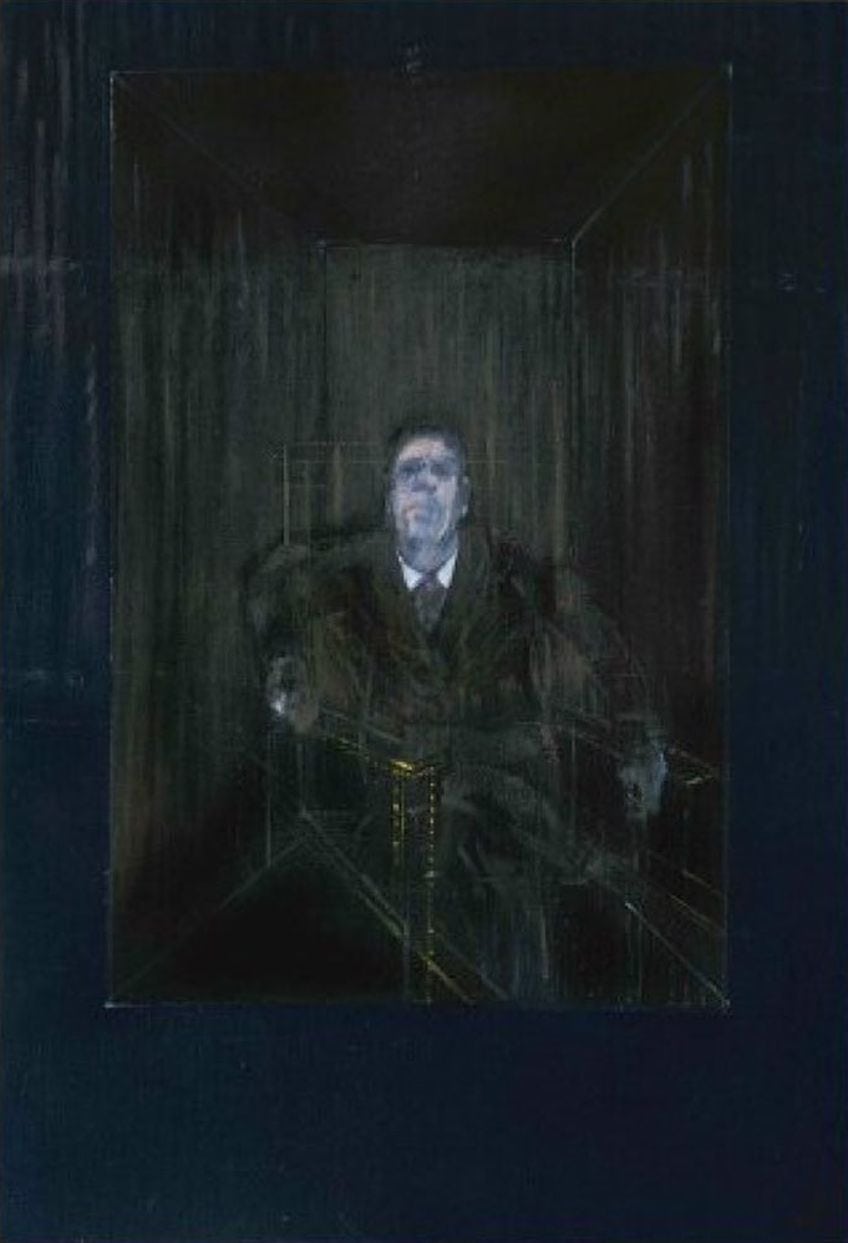
Delving into Francis Bacon’s Study for a Portrait is akin to embarking on a wild journey through the tangled maze of human emotion and existential angst. As Bacon’s brushstrokes dance with chaos and order, the portrait emerges not merely as a reflection but as a pulsating embodiment of the human condition. With each glance, the painting beckons us to confront our innermost fears and desires, inviting us to embrace the enigmatic beauty that lies within the realm of the artist’s imagination. Through Bacon’s provocative lens, we are reminded that art is not merely a mirror but a boundless portal into the depths of our collective consciousness.
Frequently Asked Questions
What Themes Are Commonly Explored in Francis Bacon’s Portraits?
Francis Bacon’s portraits are known for their raw emotion and psychological depth. They often depict the human condition, exploring themes of isolation, terror, and despair. The visceral execution represents a recurring motif of the scream and the distorted human form, aiming to evoke a strong emotional response from the viewer.
How Has Francis Bacon Contributed to the Genre of Self-Portraiture?
Francis Bacon has redefined self-portraiture by diverging from traditional methods and aesthetics. His self-portraits are characterized by a distortion of features and a focus on the internal rather than the external likeness. By doing this, Bacon delved into the psyche of the individual, contributing to the genre with a deeply personal and introspective approach that often reflects his own tumultuous life experiences.
Isabella studied at the University of Cape Town in South Africa and graduated with a Bachelor of Arts majoring in English Literature & Language and Psychology. Throughout her undergraduate years, she took Art History as an additional subject and absolutely loved it. Building on from her art history knowledge that began in high school, art has always been a particular area of fascination for her. From learning about artworks previously unknown to her, or sharpening her existing understanding of specific works, the ability to continue learning within this interesting sphere excites her greatly.
Her focal points of interest in art history encompass profiling specific artists and art movements, as it is these areas where she is able to really dig deep into the rich narrative of the art world. Additionally, she particularly enjoys exploring the different artistic styles of the 20th century, as well as the important impact that female artists have had on the development of art history.
Learn more about Isabella Meyer and the Art in Context Team.
Cite this Article
Isabella, Meyer, ““Study for a Portrait” by Francis Bacon – A Painting Analysis.” Art in Context. March 1, 2024. URL: https://artincontext.org/study-for-a-portrait-by-francis-bacon/
Meyer, I. (2024, 1 March). “Study for a Portrait” by Francis Bacon – A Painting Analysis. Art in Context. https://artincontext.org/study-for-a-portrait-by-francis-bacon/
Meyer, Isabella. ““Study for a Portrait” by Francis Bacon – A Painting Analysis.” Art in Context, March 1, 2024. https://artincontext.org/study-for-a-portrait-by-francis-bacon/.


